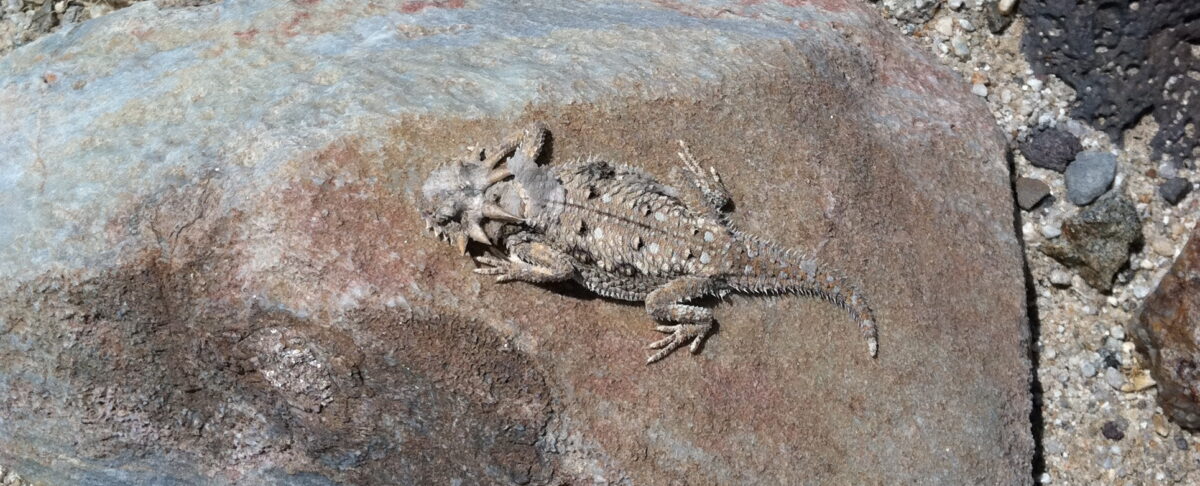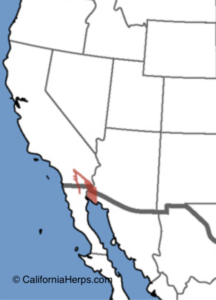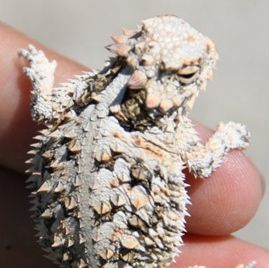FLAT-TAILED HORNED LIZARD (Flatty)
Phrynosoma mcallii

 Status: CA State Species of Special Concern
Status: CA State Species of Special Concern
USFWS Recovery Permit Required for Surveys? No, but BLM training usually required.
Range: Southern California
Link: USFWS Survey Guidelines
CalHerps best describes the habitat and range of the flat-tailed horned lizard: “Typical habitat is sandy desert hardpan or gravel flats with scattered sparse vegetation of low species diversity. Most common in areas with a high density of harvester ants and fine windblown sand, but rarely occurs on dunes. The historic range of this lizard is throughout most of the Colorado desert from the Coachella Valley south through the Imperial Valley and west into the Anza-Borrego desert, south to extreme NE Baja California, extreme SW Arizona and NW Sonora, Mexico, below 820′ above sea level (CaliforniaHerps.com, 2019).” (CalHerps)
SUITABLE HABITAT
Typical habitat is sandy desert hardpan or gravel flats with scattered sparse vegetation of low species diversity. Most common in areas with a high density of harvester ants and fine windblown sand, but rarely occurs on dunes. The historic range of this lizard is throughout most of the Colorado desert from the Coachella Valley south through the Imperial Valley and west into the Anza-Borrego desert, south to extreme NE Baja California, extreme SW Arizona and NW Sonora, Mexico, below 820′ above sea level (CaliforniaHerps.com, 2019).
 LIZARD CHARACTERISTICS
LIZARD CHARACTERISTICS
Flat-tailed horned lizards are medium-sized, flat-bodied lizards with a wide oval-shaped bodies and enlarged pointed scales on the upper body and tail. Their tail is long and flattened. The back skin is smooth with small spines, and 8 horns extend from the back of the head. (CalHerps)
SURVEY SEASON
Per the BLM guidelines, flat-tailed horned lizards can be active any time of year, and thus any construction projects occurring within potential or occupied habitat should have a biological monitor on-site. Read more here.

